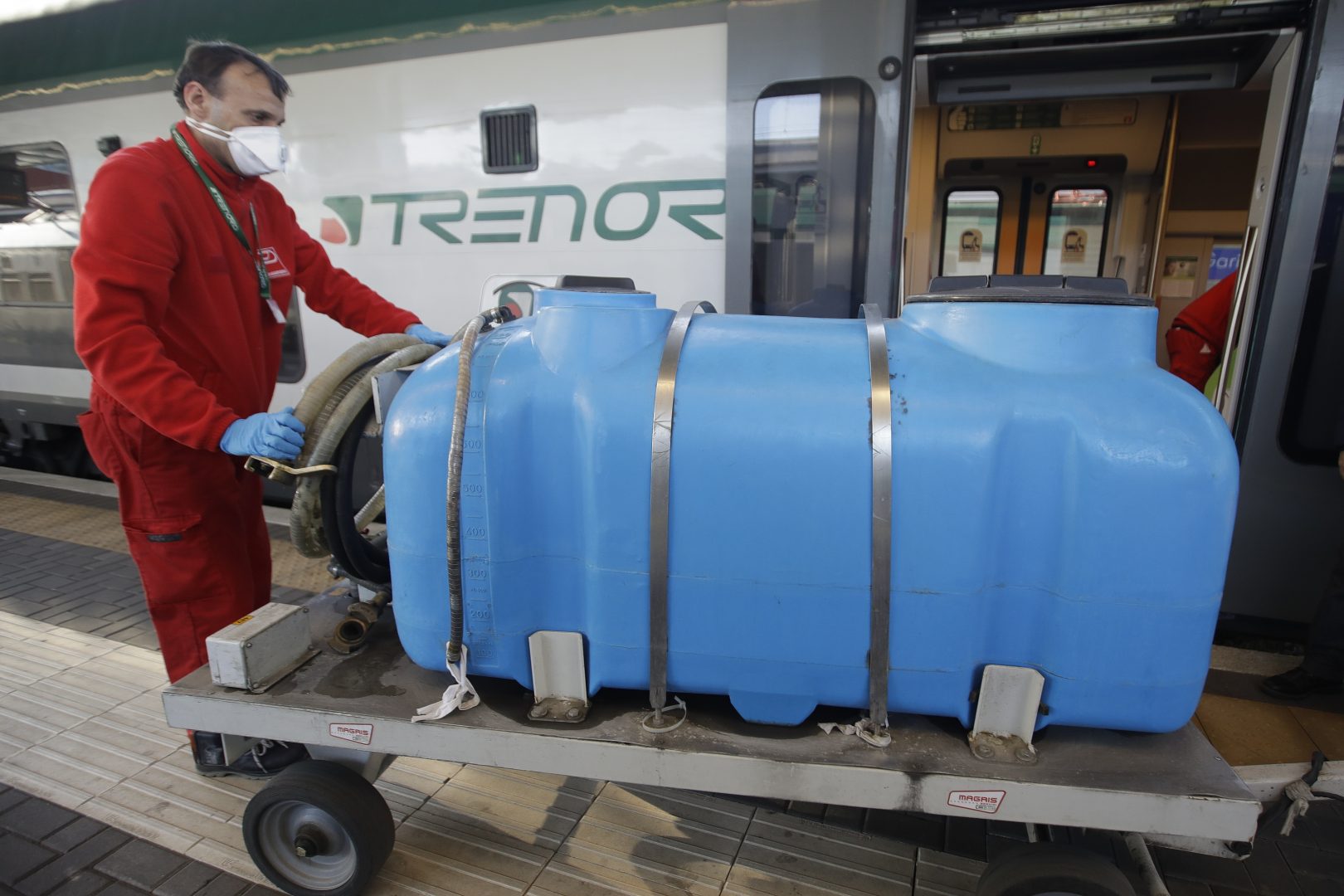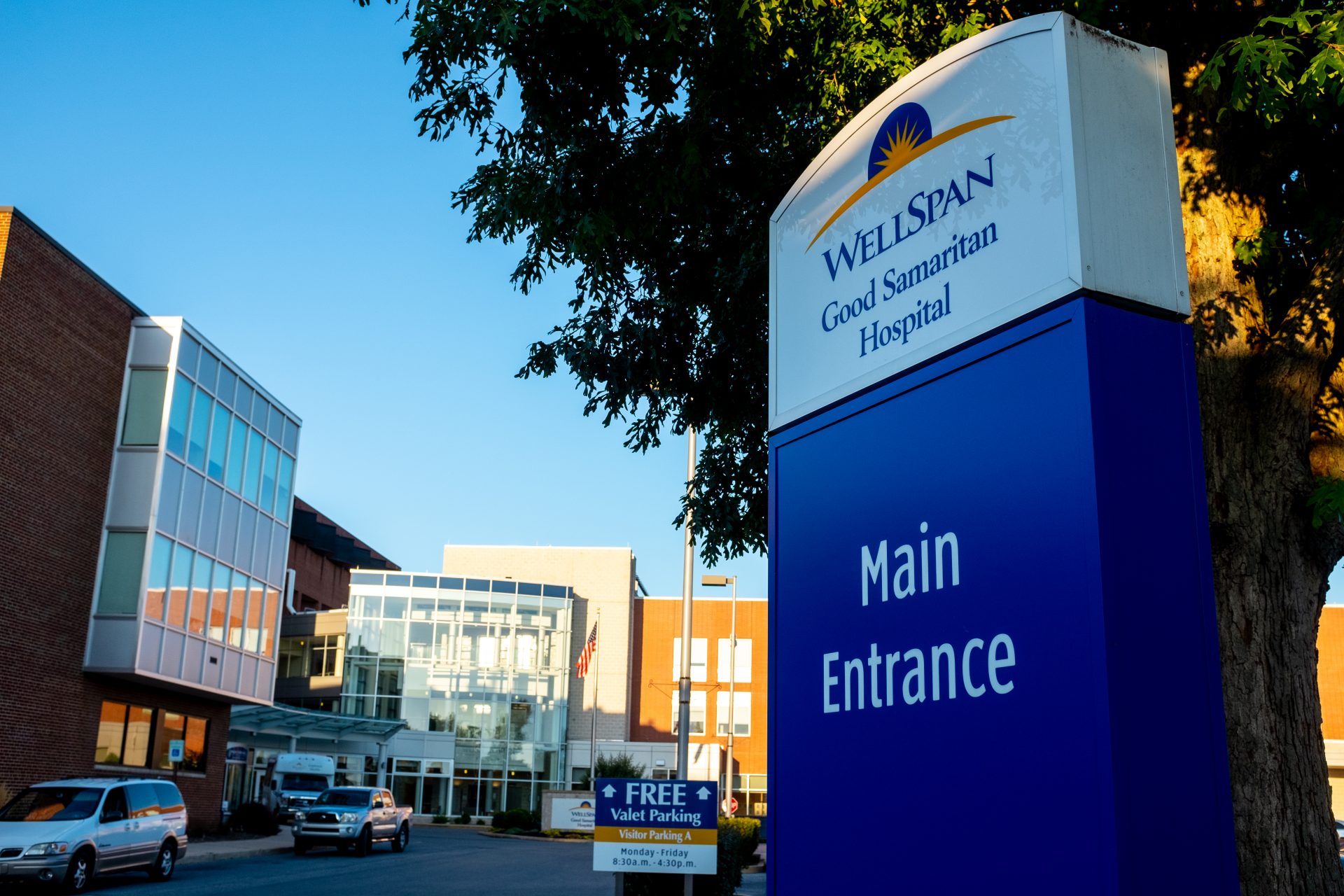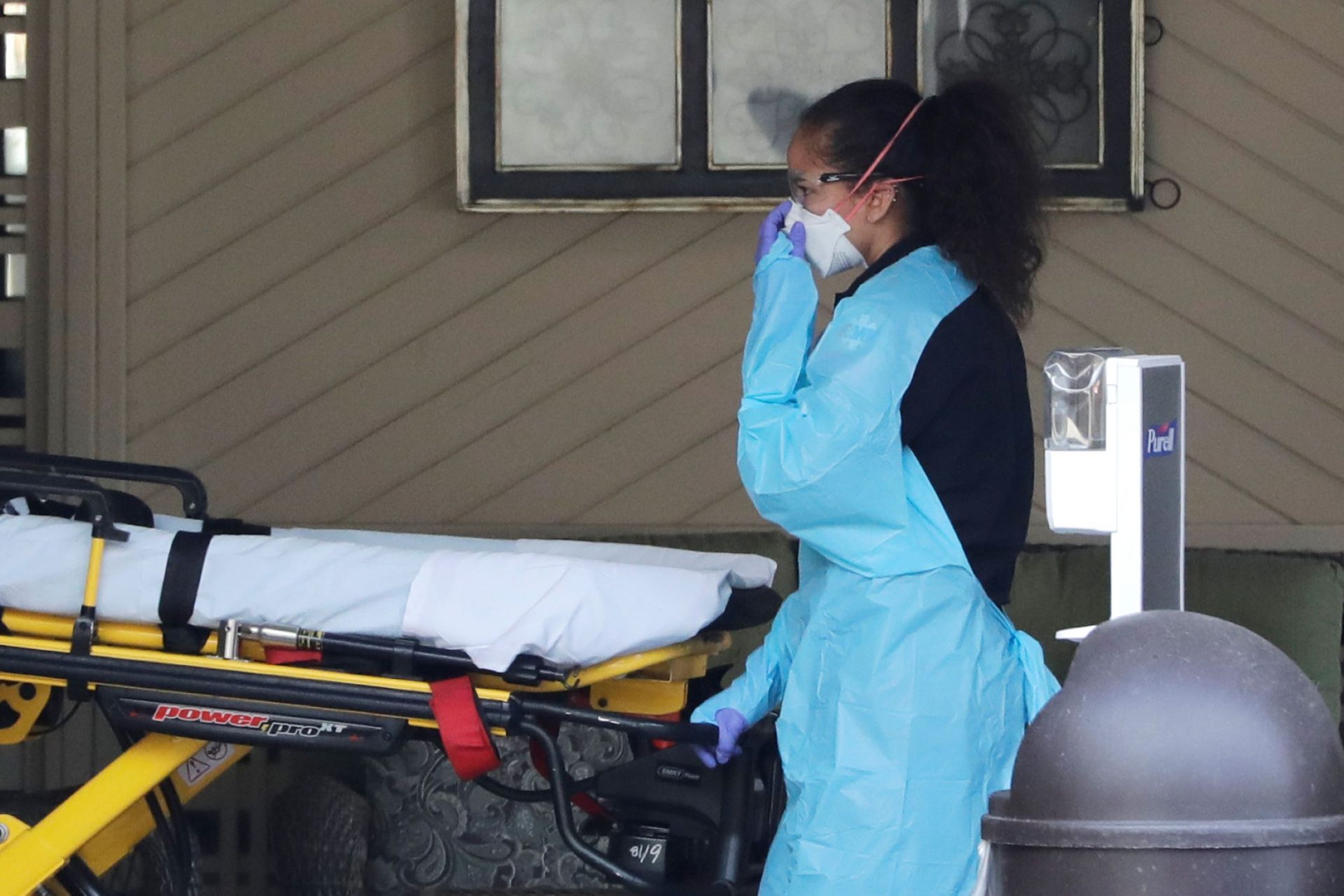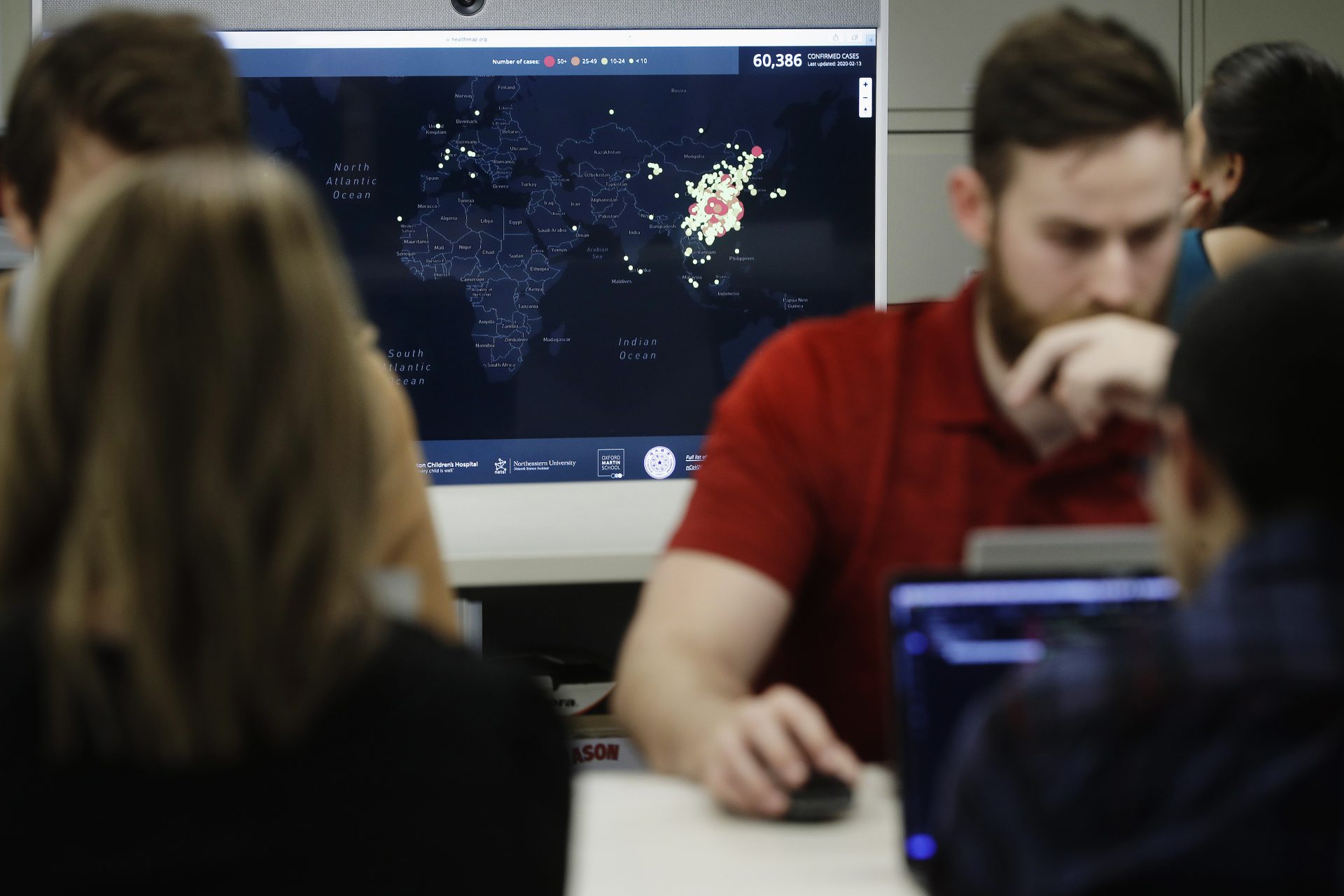
A cleaner prepares to sanitize a train at the Garibaldi train station in Milan, Italy, Friday, Feb. 28, 2020. Authorities are taking new measures to sanitize trains and public transportation after the COVID-19 virus outbreak.
Luca Bruno / AP Photo

A cleaner prepares to sanitize a train at the Garibaldi train station in Milan, Italy, Friday, Feb. 28, 2020. Authorities are taking new measures to sanitize trains and public transportation after the COVID-19 virus outbreak.
Luca Bruno / AP Photo

Luca Bruno / AP Photo
A cleaner prepares to sanitize a train at the Garibaldi train station in Milan, Italy, Friday, Feb. 28, 2020. Authorities are taking new measures to sanitize trains and public transportation after the COVID-19 virus outbreak.
(Harrisburg) — Penn State Health Milton S. Hershey Medical Center is an Ebola treatment center. That gives it special capabilities which can be applied to an outbreak of the new coronavirus, according to Dr. Catherine Paules, an infectious disease specialist for Penn State Health.
“We’ve had plans in place for a long time. We are revising some of those specific to this virus,” Paules said Thursday. “We’re working around the clock on these issues.”
Other hospitals are similarly focused on preparing for local spread of the virus, called COVID-19. They must address matters such as making sure staff knows the symptoms, mastering logistics of forwarding lab test samples and receiving results, and planning how to isolate the sick to contain the spread of COVID-19.
Penn State Health received its Ebola treatment center designation in 2015, becoming one of four in Pennsylvania and two outside Philadelphia.
Such centers are continually ready to handle cases of Ebola, a highly-contagious and deadly disease. That includes having a stockpile of protective clothing for health care workers, space to isolate the sick from other patients, and holding drills to rehearse the response.
Many if not all other hospitals are similarly focused on COVID-19, now that spread of the illness in the United States is considered inevitable.

Ian Sterling for WITF
WellSpan Good Samaritan Hospital is seen on Aug. 29, 2019.
They must worry about having adequate supplies of masks and other protective equipment for health care workers, as well as the masks recommended for people sick with COVID-19 to reduce the chance of them spreading it. They must educate staff about procedures for dealing with patients, including passing along the flow of updates and protocols from the U.S. Centers for Disease Control and Prevention.
The CDC has told hospitals to quickly put people with possible symptoms in a separate room with a closed door and, if available, in a negative pressure room, which continually sucks air out of the room and carries it outside the hospital.
Penn State Health has negative pressure rooms at the medical center in Derry Township and at Penn State Health St. Joseph in Berks County, according to a spokeswoman. UPMC Pinnacle has negative pressure rooms at its seven central Pennsylvania hospitals, a spokeswoman said.
Hospitals for weeks have been receiving a stream of information and advice from the CDC and the state health department.
Dr. Rachel Levine, Pennsylvania’s secretary of health, said the health department has participated in “countless” calls with the CDC since the coronavirus threat arose in China in early January. She said the department is in close communication with hospitals, emergency medical providers and other health care entities, to plan and coordinate the response to an outbreak.

Elaine Thompson / AP Photo
An ambulance worker adjusts her protective mask as she wheels a stretcher into a nursing facility where more than 50 people are sick and being tested for the COVID-19 virus, Saturday, Feb. 29, 2020, in Kirkland, Wash. Health officials reported two cases of COVID-19 virus connected to the Life Care Center of Kirkland. One is a Life Care worker, a woman in her 40s who is in satisfactory condition at a hospital, and the other is a woman in her 70s and a resident at Life Care who is hospitalized in serious condition. Neither have traveled out of the country.
Questioned about possible shortages or gaps in response capabilities, Levine said the state has “stockpiles” of things such as protective clothing for health care workers, and she has confidence Pennsylvania and its health systems are “up to this task.” But she said resources could eventually become strained. In that case, Pennsylvania and its health care system would rely on federal help.
She acknowledged potential shortages of such things as breathing ventilators, which have been needed to save some people stricken with coronavirus.
One significant gap in the national response plan has already appeared: Hospitals lack an on-site test to determine if someone has COVID-19, nor does the Pennsylvania Department of Health have one at its lab. As it stands, lab samples must be sent to the CDC in Atlanta, which takes up to about 48 hours to return results. The CDC sent test kits to states, but those proved faulty. As of late this week, it was unknown when a test will be available.
Meanwhile, there’s potential shortages of things such as face masks, resulting from global demand and also supply chain problems related to COVID-19.
One major Pennsylvania hospital system, in an internal email, advised staff to avoid sending extra protective clothing and masks home with patients, and to re-use items when possible.
A Penn State Health spokeswoman said the center is prepared to handle “multiple” coronavirus patients, but didn’t have an exact capacity.
In the event of a large outbreak, the medical center will be relying on help from state and federal agencies, and other hospitals will also be taking care of patients in a coordinated effort, Paules said.

Steven Senne / AP Photo
In this Thursday, Feb. 13, 2020 photo, Kyle Martin, a worker at HealthMap, a system using artificial intelligence to monitor global disease outbreaks, mines health data to keep the system up to date in a work area at Boston Children’s Hospital in Boston. Early warnings of an emerging epidemic, some of them collected by HealthMap, showed AI’s potential for giving global health experts a head start when bureaucratic hurdles and language barriers might get in the way. A screen behind displays a world map with colored dots marking cases of the disease known as COVID-19.
“Obviously, the more patients there would be, the more challenging it would be … that’s one of the things we’re talking about and preparing for,” she said.
During an outbreak, a critical early step will involve figuring out whether people with symptoms such as fever and coughing have COVID-19. If they do, they will be put in isolation, and an effort will be launched to figure out who infected them, and whether they had contact with others who may become infected. It takes up to 14 days for symptoms to appear.
Paules co-authored a January article in the Journal of the American Medical Association focusing on what science knows about the new coronavirus.
Experts have said the death rate of people infected with the coronavirus in China is 2-4%. The death rate has been lower in some of the other countries where it has shown up.
Discussing the threat posed by the new coronavirus, Paules noted the death rate for the regular flu is .1%, the death rate of a pandemic-causing flu is typically a little less than 1%, and the death rate during the 1918 Spanish flu pandemic, the deadliest in history, was an estimated 2-2.5%. “So this is not a trivial virus we are seeing,” she said of COVID-19.
Paules said that up until about two weeks ago she considered it unlikely an outbreak would affect Pennsylvania. Her view has changed, and she now believes a local outbreak is a serious possibility.
She said her best advice to area residents is to use sources such as the state health department and the CDC to stay informed about the latest news and information about COVID-19. That involves knowing how to protect themselves from the coronavirus or to avoid spreading it.
“We are all stakeholders in this. We need to pay attention to what’s going on with this outbreak,” she said.
PennLive and The Patriot-News are partners with PA Post.
The days of journalism’s one-way street of simply producing stories for the public have long been over. Now, it’s time to find better ways to interact with you and ensure we meet your high standards of what a credible media organization should be.